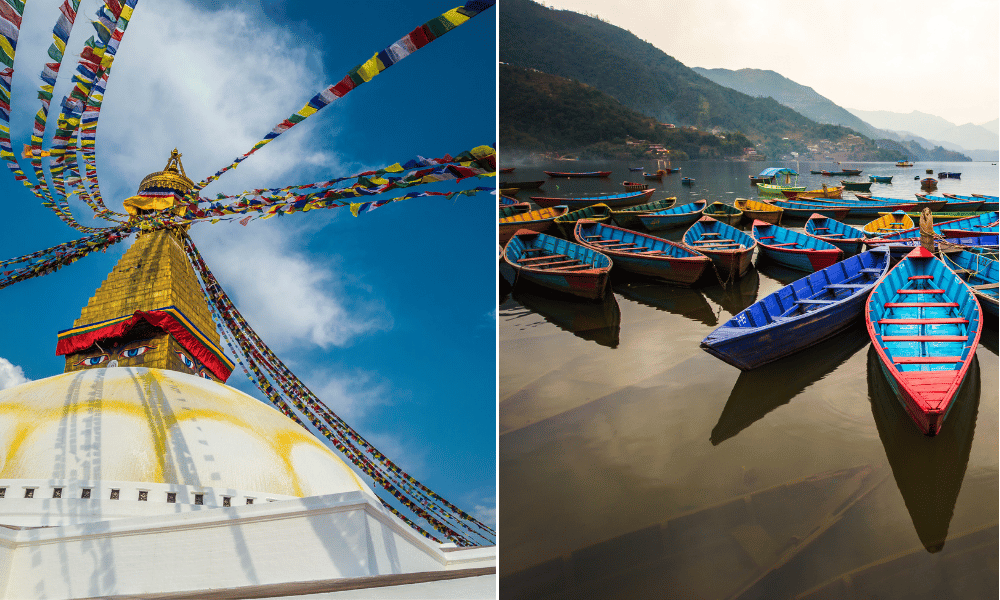Nepal, a landmark where nature creates its masterpiece, offers a diverse floral and faunal spectrum, geographical variations, and natural beauty, making it the best place to visit. But when do you think the magic of these scenic wonders will truly come alive? Let the best time to visit Kathmandu and Pokhara be your ultimate guide to experiencing the best of Nepal at the perfect time. Get to know more about different factors such as weather conditions, accessibility, and temperature variation that play a pivotal role in determining your time to visit.
This article primarily focuses on the two major cities of Nepal, i.e., Kathmandu and Pokhara, which stand out as the most prominent tourist cities, each offering its own unique charm. Both cities, nestled in stunning valleys, are captivated by breathtaking scenery and profound religious significance, attracting cultural enthusiasts and adventure seekers alike. Moreover, you will uncover the best time to explore Kathmandu and Pokhara while discovering the weather patterns, festivals and events, activities, and interests of each destination that define each season.
Understanding the best time to visit Kathmandu and Pokhara is essential for travellers seeking to unlock the full potential of their journey. Based on your preferences, you can tailor your schedule for a memorable experience. Also, selecting the optimal time increases your chance of participating in your desired interests. Overall, it can enhance your travel experience, allowing you to make informed decisions that align with your preferences, budget, and desired activities. Make sure to get the most out of this article for an enjoyable, optimised, and hassle-free trip.
Best Time to Visit Kathmandu and Pokhara
Kathmandu and Pokhara are the two major cities in Nepal. It caters to travellers with different travel styles and interests, ranging from luxury tours, cultural tours, and nature tours to adventure tours as well. Also, Pokhara works as a major gateway to different trekking destinations in the Annapurna region. Together, Kathmandu and Pokhara complement each other, providing travellers with a holistic experience of Nepal's natural beauty, cultural richness, and adventure opportunities.
Both Kathmandu and Pokhara experience a subtropical highland climate with distinct seasons with variation in temperature and precipitation. However, due to their differing elevations and closeness to the Himalayas, the two cities experience some climatic differences. While choosing your ideal time, both the cities, Kathmandu and Pokhara, cater to your specific preferences and climatic differences during various seasons. Autumn and spring are considered two of the most ideal seasons to visit these cities, despite the fact that Nepal welcomes you to travel throughout the year.
With that being said, the ultimate decision about your travel depends upon your personal preferences, interests, and schedules, as different travelling environments hold their own magic. Given below is the categorization of seasons with their features, which will help you make an informed, prepared, and preferred choice best suited for you.
Best Time to Visit Kathmandu
The best time to visit Kathmandu largely depends on what you’re looking for on your trip. Generally, Kathmandu experiences four distinct seasons; spring, summer, autumn, and winter, where each season offers its own pros and cons according to the traveller's interests and choices. Here’s a detailed breakdown of it:

Spring Season (March-May)
The average temperature hovering around 28°C, tempered by cool nights of temperature around 15°C, makes spring one of the ideal seasons to visit Kathmandu. This season lets you explore the city without experiencing burning heat or a bone-chilling cold. Compared to the peak season, spring sees slightly fewer tourists, making sightseeing more comfortable. Occasional rain showers might add a touch to your trip, but the warmth of the sun the very next day makes the weather even more pleasant. During this season, festivals celebrated in Kathmandu like Holi and Nepali New Year let you join the fun of local festivals. Furthermore, spring welcomes blooming flowers, creating a stunning natural landscape for those who are enthusiastic about outdoor activities such as hiking near the hills of Kathmandu and trekking on the lower trails. However, due to the limited availability of rainfall, Kathmandu’s valley can trap dust and pollution, impacting visibility at times.
Monsoon Season (June-August)
Visiting Kathmandu during the summer season is a mixed feeling. You can expect daily downpours that can last for hours or days, disrupting outdoor activities and making sightseeing challenging. The heavy rain can trigger landslides, potentially impacting transportation and accessibility in certain areas. Well, if you’re flexible and don’t mind the rain, witnessing the beauty of the monsoon can be a memorable experience, offering a different perspective on the city. It can be a budget friendly travel with fewer crowds, providing you with a relaxed atmosphere in sightseeing areas. However, travelling during this season requires extra precaution as mosquito-borne diseases like dengue fever are more prevalent. Also, if you prioritise outdoor activities such as hiking, trekking, comfortable travel, and reliable weather, this season might not be preferable for you.
Autumn Season (September-November)
Autumn is considered the best season due to clear skies, comfortable temperatures, and a vibrant post monsoon environment. As it is a post monsoon period, the monsoon washes away summer dust, revealing Himalayan views perfectly from different viewpoints around the valley. In fact, this season, with an average temperature of around 22°C at its highest and 10°C at its lowest, creates perfect conditions for sightseeing and outdoor activities such as hiking to the nearest hills and trekking to different regions. Also, autumn makes the city come alive with a festive spirit, inviting major festivals such as Dashain and Tihar, offering you a glimpse of Nepalese culture and traditions. Even so, those who don't like crowded areas might want to avoid this season, as it is the peak season and the number of tourists significantly increases. With the rise in tourist numbers, the price of flights, accommodation, and activities is more expensive compared to other times of the year.
Winter Season (December-February)
Winter in Kathmandu offers dry weather, with a generally average maximum temperature around 17°C and a minimum temperature around 3°C. The winter offers chilly nights and mornings, offering comfortable days of sightseeing without summer heat. Compared to peak season, you’ll encounter fewer crowds and potentially lower prices. However, in winter, fog can interrupt your flight schedules, and you will also have less time for sightseeing due to shorter daylight hours. It might also not be preferable for those who want to do high altitude treks. Depending on your personal preference and tolerance for cold, informed, and well prepared travel, winter might also be a great option for you.
Best Time to Visit Pokhara
Similar to Kathmandu, Pokhara also experiences four seasons: spring, summer, autumn, and winter. Due to its geographical location, Pokhara has more proximity to the Himalayas, offering a serene environment. Also, it offers more options for outdoor activities, leading to a better connection with nature. Here’s how you can experience the best of Pokhara as you understand the different seasons in Pokhara:
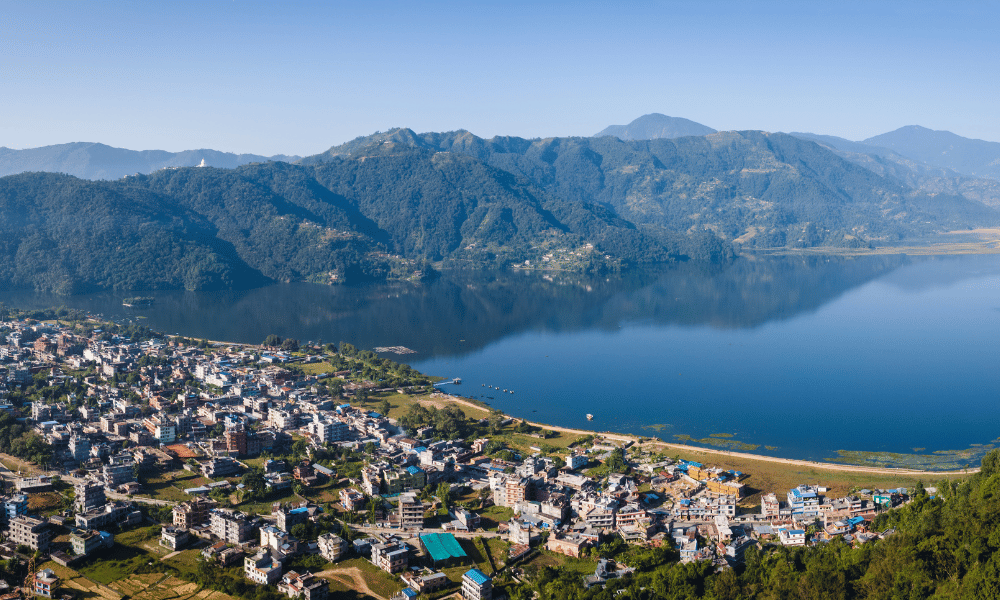
Spring Season (March-May)
Unlike Kathmandu, Pokhara receives slightly less rainfall during the spring, with occasional showers instead of heavy downpours, allowing for enjoyable outdoor time. The average temperature ranges from 30°C to nights cooling down to 17°C. The landscape around the city becomes more scenic, with vibrant flowers coming alive and breathtaking views of the Annapurna Range standing above the city, accompanied by fewer crowds. Also, this season provides the best conditions for adventure activities such as paragliding and boating, as the skies are generally clear with fresh air. The prices might be slightly higher due to increased demand compared to the monsoon or winter seasons.
Monsoon Season (June-August)
Exploring Pokhara during the summer season depends more on your preference for travel than on recommendations. Most travellers seeking reliable weather, outdoor seekers, and comfortable travel might not prefer this weather due to daily downpours lasting for hours, limited access to certain areas, summer borne diseases, and muddy trails for those interested in treks. However, if you’re on a tight budget, enjoy low crowds, and are quite comfortable with rain, this season might be for you. You’ll find cheaper flights and a more quiet and relaxed atmosphere while discovering the different perspectives of the city.
Autumn Season (September-November)
Considered the peak season, autumn offers clear skies with an average temperature ranging from 12°C to 22°C. It offers perfect weather for outdoor activities in Pokhara, such as boating, paragliding, and trekking. The major festivals, such as Dashain and Tihar, also fall in this season, revealing Nepalese culture and traditions in a practical way. Similar to Kathmandu, this season increases the number of tourists, and the flights, accommodations, and activities are expensive compared to other seasons due to the larger demand.
Winter Season (December-February)
With an average temperature ranging from the highest 20°C to the lowest 5°C, winter in Pokhara offers you dry weather with chilly mornings and evenings, a perfect escape from the boiling heat of summer. Compared to the bustling peak season, winter in Pokhara offers a quieter atmosphere with fewer crowds, allowing visitors to immerse more deeply in the serenity of the surroundings. It might be an affordable time to visit if you’re a budget conscious traveller. Trekking during this time period is not highly recommended, but those with brave souls seeking to navigate the challenges need to be well prepared for safe travel and a unique experience.
Major Attractions in Kathmandu
Kathmandu Valley, at an altitude of 1400 m, is a fascinating city with a rich history and culture. The city bears various cultural heritages, such as temples, stupas, durbar squares, and other ancient architecture. The history behind the formation of the Kathmandu Valley is very unique. In mediaeval times, Kathmandu Valley used to be a huge lake. Manjushree, a bodhisattva, imagined the huge lake as a beautiful habitat. He then drained the water from this huge lake by cutting off the hill from Chovar. Kathmandu Valley is now the largest city in Nepal in terms of population. The beauty of Kathmandu lies in the cultural and architectural heritage of the Kathmandu Valley.

Immerse yourself in the heart of Kathmandu, which includes major attractions such as Hindu temples like Pashupatinath Temple, one of the largest stupas such as Boudhnath Stupas, and squares such as Kathmandu Durbar Square, Patan Durbar Square, and Bhaktapur Durbar Square. All of the attractions mentioned below are UNESCO listed world heritage sites.
Pashupatinath Temple
It is a pagoda style Hindu temple dedicated to Lord Shiva, housing the sacred Shiva Lingam. The temple is surrounded by numerous shrines, ashrams, monuments, and ghats spread across 264 hectares. It serves as a vibrant centre for Hindu rituals and ceremonies where devotees offer prayers and participate in different pujas and aarti along the banks of the Bagmati River. Only Hindus are allowed inside the main temple, but non-Hindus can still observe the rituals and ceremonies from the eastern banks of the Bagmati River.
Learn More: Pashupatinath Temple
Swayambhunath Stupa
Located on a hilltop, it is a sacred Buddhist stupa believed to have been built in the 5th century. You need to take 365 steps to reach the top, which offers a spectacular view of the Kathmandu valley. It is surrounded by a number of smaller stupas and shrines. This stupa is a perfect example showcasing the harmony between Hindu and Buddhist religions, with temples around the stupa. The best time of the day to visit the stupa is early in the morning or late in the afternoon to avoid the crowds. Moreover, there are several monasteries located at Swayambhunath, and they are great places to learn more about Buddhism.
Learn More: Swayambhunath Stupa
Boudhanath Stupa
One of the largest stupas, Boudhanath, is said to have been built in the 5th century. It holds immense religious significance for both Nepalese and Tibetan Buddhists. It is a whitewashed dome enriched with various paintings depicting Buddha and various Buddhist deities. The stupa is a symbol of enlightenment and peace, and it is a sacred site for Buddhists for meditation and prayer. The vibrant prayer flags fluttering atop the stupa and surrounding areas add to the spiritual ambiance. It attracts a large number of locals as well as tourists due to its bustling surrounding markets, cosy cafes, and restaurants.
Learn More: Boudhanath Stupa
Kathmandu Durbar Square
Kathmandu Durbar Square, renowned by its other names such as Hanuman Dhoka Durbar Square and Basantapur Durbar Square, was the centre of Malla and Shah Kings rule from the 14th to 19th centuries. The square served as a place for coronations, royal events, and the daily lives of the royals within the palace walls at that time. It features royal palaces, courtyards, and temples such as Hanuman Dhoka Palace, Kasthamandap, Kumari Ghar, Taleju Bhawani Temple, and other statues and monuments. There is a vibrant alleyway near the square known as freak street, lined with different restaurants and cafes showcasing a modern outlay near the traditional square.
Learn More: Kathmandu Durbar Square
Patan Durbar Square
This square is famous as a mediaeval town surrounded by palaces, temples, courtyards, and hitis (stone taps). The architecture of Patan Durbar Square is a stunning example of Newari craftsmanship. The historical heritage is characterised by brickwork, wood carvings, and metal work. Visitors can explore the temples and palaces, admire the architecture, and learn about Nepal’s history and culture. The square is home to a number of important religious monuments, such as the Krishna Mandir, Bhimsen Temple, Sundari Chowk, and Patan Museum, providing a glimpse into the history and culture of the site.
Learn More: Patan Durbar Square
Bhaktapur Durbar Square
Bhaktapur Durbar Square, located in the eastern part of Kathmandu, approximately 15 km away, displays the artistic and architectural brilliance of the Malla dynasty. This square features architectural masterpieces such as the 55-Window Palace, Golden Gate, Nyatapola Temple, and Dattatreya Temple. It offers more than just visual sights. Apart from the architectural wonders, the traditional crafts, Thangka paintings, festivals, Newari cuisines, and the famous JuJu Dhau (King of Yoghurt) highlight the area as you explore through the square's alleys and corners.
Learn More: Bhaktapur Durbar Square
Major Attractions in Pokhara
Pokhara is a popular tourist destination at an elevation of 822m. Pokhara is the gateway to the Himalayas, known for its stunning views of the Annapurna range, Dhaulagiri, and Manaslu. This city combines both natural and cultural sites such as Davis Falls, Gupteshwor Mahadev Cave, Pumdikot, Bindhyabasini Temple, Sarangkot Viewpoint, Phewa Lake, and views of breathtaking peaks. Besides, it also offers incredible opportunities for outdoor and adventure activities such as trekking, boating, paragliding, zip flying and many others.
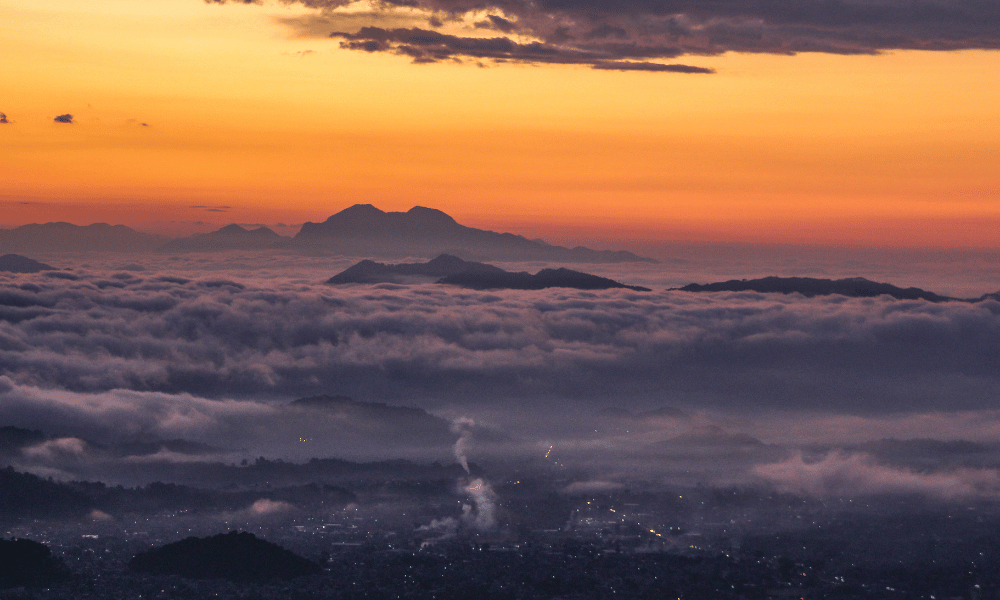
Gupteshwor Mahadev Cave
It is one of the longest caves in Nepal, with a length of 2950 m. It is home to a number of Hindu shrines, including those of Lord Shiva. It is famous for its unique rock formations inside the cave with stalactites and stalagmites. This cave welcomes a waterfall cutting through the cave, which is Davis Falls, often referred to as Patale Chhnago by the locals. It runs 500 feet deep and further 100 feet from ground level. Apart from the cave and falls, the area is surrounded by serene and picturesque settings with lush greenery and local markets outside the entrance gate.
Bindhyabasini Temple
Bindhyabasini Temple is a shikhara structure situated on a small hill near the lakeside area. It is a sacred Hindu temple dedicated to Goddess Bhagwati, with the presence of a black Shaligram, a sacred stone representing the goddess. The temple is surrounded by several other smaller temples dedicated to deities like Saraswati, Shiva, Hanuman, and Ganesh within the premises. It holds immense religious importance for Hindus, where devotees seek blessings by sacrificing animals and providing homage for good health, prosperity, and protection from evil.
Learn More: Bindhyabasini Temple
Sarangkot Hill
Sarangkot is a hill located on the western side of Nepal at an altitude of 1600 m above sea level. The main attraction of Sarangkot is undoubtedly its scenic beauty. It is renowned for witnessing majestic sunrises and sunsets with panoramic views of mountain peaks such as Annapurna (8091m), Dhaulagiri (8167m), and Manaslu (8156m), making it a popular tourist destination. Also, Sarangkot is renowned as one of the world’s best paragliding locations, offering a thrilling experience with a breathtaking view of the Himalayas. You can also enjoy other adventure activities, such as zip flying and ultralight flights, from Sanrangkot.
Phewa Lake
Phewa Lake is a freshwater lake located in Pokhara, which is a popular tourist destination known for its scenic beauty and boating. Surrounded by the Annapurna ranges, Phewa Lake offers magnificent views, especially during sunrise and sunset. In between the lakes is the Taal Barahi temple, dedicated to Goddess Durga. It is one of the sacred pagoda-style Hindu temples. You need to take a boat ride to reach here, where you can enjoy the pleasant vibe offered by the tranquility of the lake. The lakeside area of the lake is a vibrant tourist hub with restaurants, cafes, local shops, and beautiful night lights.
Exploring all of these major attractions also includes choosing an ideal time for experiencing the best the destination can provide.
Activities in Kathmandu and Pokhara
For most of the activities mentioned, autumn and spring are considered the ideal seasons due to their perfect weather conditions for travel. However, to choose the best for you according to your interest in activities, the following things might guide you accordingly:
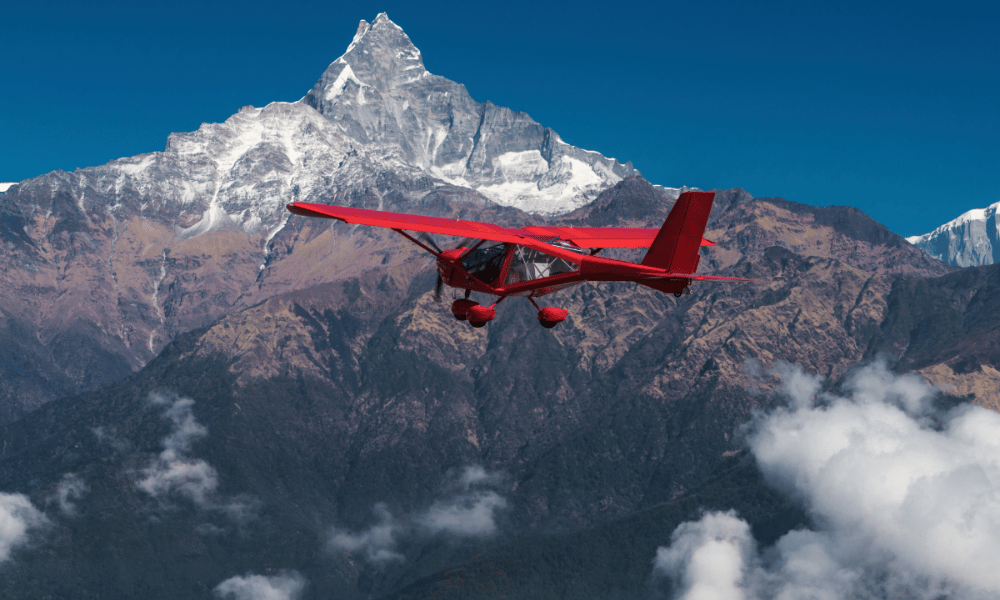
Sightseeing
Whether you are exploring ancient temples, strolling along the bustling lakeside area, or enjoying the panoramic mountain views, you need to make sure that you find your best choice for travel. All seasons have their charm, but autumn and spring offer comfortable temperatures and clear skies. Sightseeing in Kathmandu and Pokhara not only includes exploring the physical attractions but also considering the festive seasons, which lets you have direct immersion into Nepal’s rich culture.
Cultural Experiences
Nepal is known for its rich cultural heritage and vibrant festivals throughout the year. Some of the most popular festivals include Dashain in autumn, Maghe Sankranti in winter, Holi in spring, and Gai Jatra in summer. These festivals offer you a glimpse into Nepal’s rich traditions and heritage. It also provides you with opportunities to participate in the festive spirit, allowing you to connect closely with the locals and enhance your overall experience.
Adventure Activities
You will get to be involved in various adventure options such as hiking, trekking, paragliding, and ultralight flights that require proper preparation. While adventure activities like bungee jumping and paragliding are available year round, weather conditions may affect specific months. It's essential to consider factors like wind speed, rainfall, and visibility, especially during the monsoon season. If you're an active adventure enthusiast, to get the most out of these adventures, you need to prepare your time schedule accordingly. You might need to pre book your spot if you’re travelling during peak seasons.
Also read: Adventure activities in Pokhara
Shopping
Kathmandu and Pokhara offer a delightful shopping experience, with different local shops offering handicraft items, pashminas, spices, and textiles. In Kathmandu, you can find treasures like Khukuri and Pashminas in Thamel. Wander through the traditional alleys of Asan Tole for spices and textiles, or for more upscale shopping, you can shop around the Durbar Marg area. If you're interested in pottery items, you can find pottery shops where you can buy and make pottery items yourself as well. Similarly, in Pokhara, you can stroll around Lakeside’s relaxed shops, overflowing with souvenirs, trekking gear, and traditional Nepali clothing. You can also find shops with beautiful Thangka paintings. You will be fascinated by the unique shopping vibe of each market.
Seasonal Festivals Breakdown
Kathmandu and Pokhara are rich in cultural festivals and celebrations throughout the year. The diverse festivals offer you a unique opportunity to witness Nepal’s rich cultural heritage and participate in the joyous spirit of the people throughout the year. Here are some major festivals celebrated in Kathmandu and Pokhara in different seasons:
Festivals in Spring (March-May)
Spring welcomes pleasant temperatures, longer days, and blossoming flowers. It is a time for renewal and joy. People celebrate this season as the end of winter and the onset of warmer days. Festivals such as Holi, Bisket Jatra, Chaite Dashain, and the Nepali New Year are celebrated during this season.

Holi
Also known as the festival of colours, Holi is a festival celebrated during the full moon day of the month of Falgun in the Nepalese calendar, which typically falls in March. In this way, people throw coloured powder and water at each other in a playful way. It marks the arrival of spring and the shedding of winter’s cold grip. The colours in the festival symbolise joy, love, and the destruction of evil influences. Friends, family, and strangers join in the colourful chaos, celebrating unity and forgiveness.
Learn More: Holi Festival
Bisket Jatra
It is an eight day festival celebrated by the Newar community of Bhaktapur. It is celebrated in honour of Bhairav, the god of destruction. The major highlight of the Bisket Jatra is the tug of war between two groups from different parts of Bhaktapur. A massive chariot (Rath) representing Bhairav is pulled between the city streets. The teams compete to pull the chariot to their respective areas, symbolising the struggle between good and evil. This festival is also known as the New Year’s festival in Bhaktapur, as it falls at the time of the Nepalese New Year.
Festivals in Monsoon (June-August)
The monsoon brings much needed water for agriculture and helps in celebrating festivals such as Ropai in Ashad 15 of the Nepali calendar. The festivals celebrated during this time, like Gai Jatra, Rato Machhendrnath Jatra, and Janai Purnima, offer cultural and religious significance, providing moments of joy and community bonding amid the rainy weather.
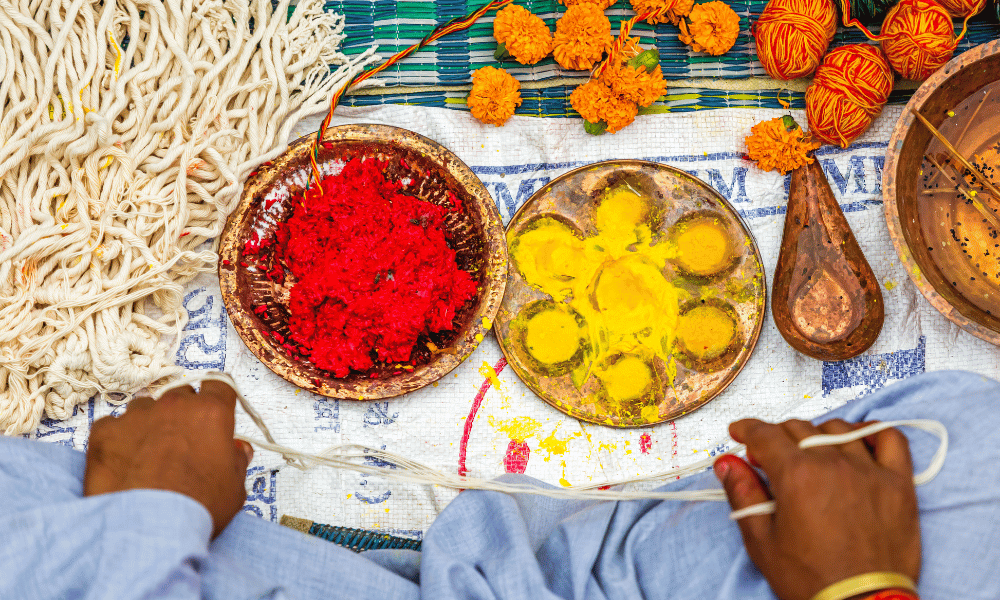
Gai Jatra
Gai Jatra translates to “Festival of Cows” and is observed to commemorate the deaths of loved ones who passed away in the previous year. As cows are the national animal of Nepal and are considered sacred, the cow symbolises innocence and helps guide the deceased on their journey to the afterlife. The festival is a reminder that death is a natural part of life and that there is hope for life after death. In this festival, families who have lost their loved ones here gather and participate, often dressing their children as cows or other animals.
Learn More: Gai Jatra in Kathmandu Valley
Janai Purnima
Janai Purnima is a sacred thread ceremony celebrated by Hindus to mark the changing of the sacred thread. The ceremony is performed by a priest who chants mantras and ties a new thread around the wrist. Also, on this day, Hindu men, especially Brahmins and Chhetris, change another sacred thread called Janai. The thread is a symbol of purity, protection, and devotion to God. This festival is also called Rakhsya Bandhan in some parts of India, celebrating the bond of love between siblings.
Festivals in Autumn (September-November)
Autumn is perhaps the most celebrated season in Nepal. Festivals during this time often involve elaborate rituals, festivals, and social gatherings, making transition from rainy season to the cooler months. Festivals like IndraJatra, Dashain, and Tihar are celebrated with great enthusiasm.
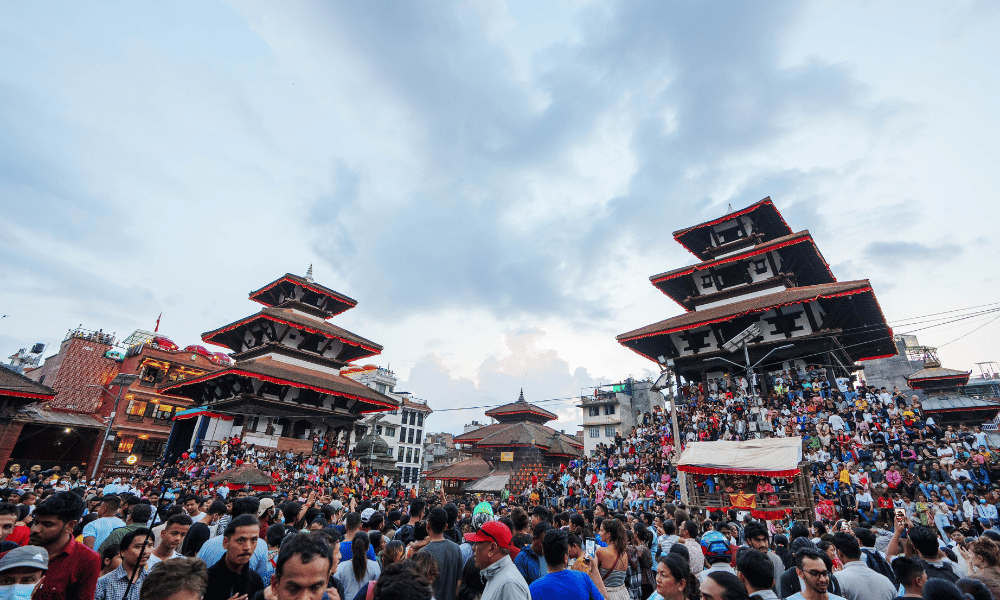
Indra jatra
One of the most important festivals in the Newar calendar, this festival is celebrated in Kathmandu to honour the god Indra, the King of Heaven. The festival begins with the erection of a tall wooden pole called a yasing in Basantapur Durbar Square. The pole is believed to represent Indra’s power. Also, chariots carrying living goddess Kumari, Ganesh, and Bhairav are pulled through the streets of Kathmandu. Throughout the festival, various religious ceremonies are performed to worship Indra and other deities.
Learn More: Indra Jatra and Kumari festival
Dashain
It is the longest and most important festival in Nepal, and it is celebrated for about 15 days. In this festival, Hindus offer prayers to Goddess Durga, who is believed to have defeated the demon Mahisashura. It is a time to come together with family and friends to celebrate the victory of good over evil. In this festival, the elders put Tika on the forehead and Jamara on the heads of the junior members of the family, with blessings of peace and prosperity throughout the years.
Learn More: Dashain Festival
Festivals in Winter (December-February)
The winter in Nepal is generally cold. Despite the chill, winter festivals like Maghe Sankranti and Tamu Lhosar bring warmth and cheer to communities across the country. These festivals celebrate the passing of the old year and the anticipation of a new beginning, growing a sense of unity and cultural pride even in the coldest months.
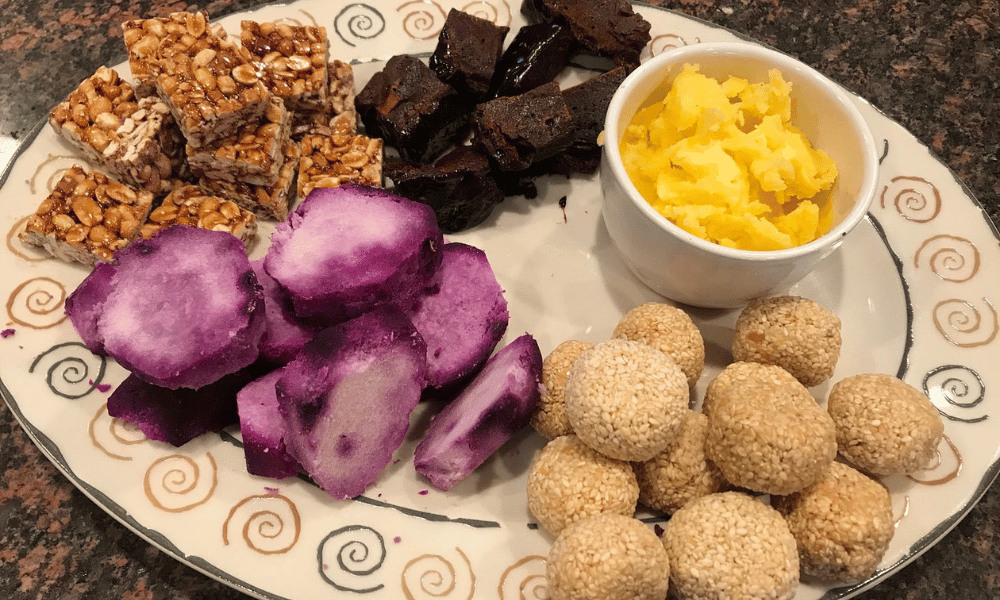
Maghe Sankranti
This festival marks the beginning of the new month, Magh in the Nepali calendar, the beginning of longer days, and the end of the winter solstice. It usually falls in mid-January. People feast on special foods such as Til Ko Laddu (a sweet made from sesame seeds) and fresh vegetables such as sweet potato and yam. Family and relatives gather together to celebrate their time in different areas of Kathmandu, primarily at a fair conducted in Tudikhel, opposite Kathmandu Mall, with the display of different Tharu cuisines, cultural dances, and songs.
Learn More: Maghe Sankranti
Tamu Lhosar
This is the New Year festival of the Gurung people, an ethnic group of Nepal. It is celebrated on the full moon day of the Nepali month of Poush, which falls in December or January. In this festival, people wear traditional Gurung clothing, gather together, prepare and eat a special feast, sing, dance, and enjoy each other's company.
Related Read: Nepal Festival Calendar
Seasonal Effect on Accommodations
Seasons prominently impact the accommodation options in Kathmandu and Pokhara due to seasonal fluctuations in tourism demand, weather conditions, and local festivals. As a result, it affects the budget and availability of your hotel. Hence, understanding seasonal patterns and how they change the budget and availability is essential for you to secure suitable and comfortable accommodations.
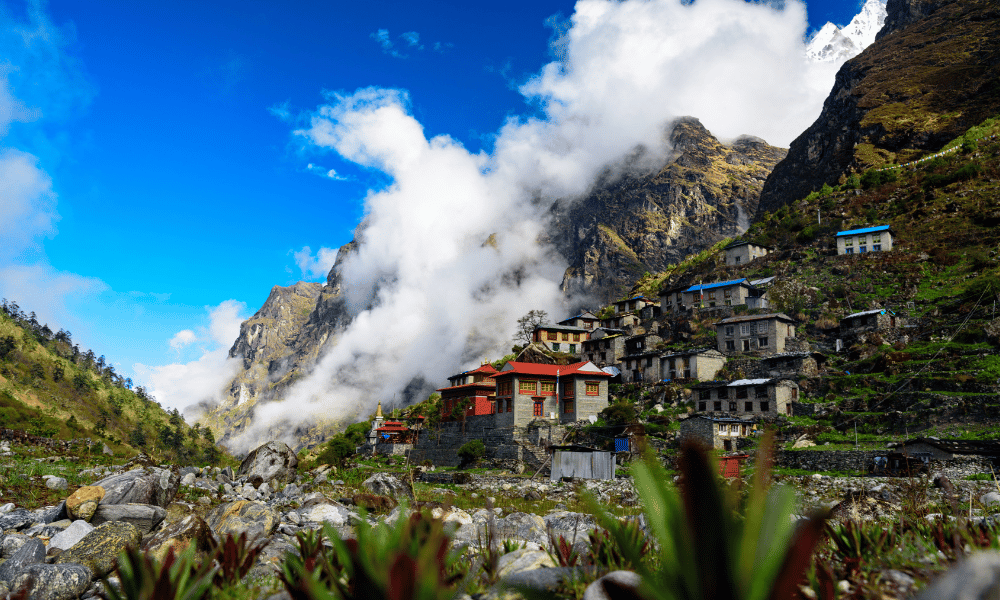
Budget
The prices are higher in peak season due to higher tourist flow and lower in low/off season due to a lower number of tourist flows.
Peak Season (September-November, March-May)
During this time, all types of accommodations significantly increased their prices. Mostly, luxury hotels might double or triple their price compared to other seasons.
Low season (June-August, December-February)
The lower tourist flow is what leads to significant discounts at many accommodation facilities. You will get the most affordable prices and also create room for negotiation. Budget hotels become even more economical.
Availability
The availability of hotel options is mostly affected by the fluctuation of the tourist market. However, besides that, it also depends on the type of accommodation facility you actually want.
Peak Season (September-November, March-May)
This time period sees higher demand for accommodation due to higher tourist flow, leaving fewer options. You need to book early to get the best deal, especially for popular accommodations. Especially those who are seeking outdoor activities such as trekking, as trekking is usually in remote areas and accommodation facilities are limited there.
Low season (June-August, December-February)
You will be able to find the widest selection of accommodations due to lower tourist demand. This season also makes both last minute deals and negotiating lower rates possible. However, if you’re interested in trekking, make sure to pre book your accommodations, as during the winter, many guest houses/hotels close, making availability limited.
Transportation Options
Kathmandu and Pokhara are two of the most popular destinations in Nepal. Getting to these cities can be an adventure in itself, as there are different modes of transportation to choose from. The only international airport in service is in Kathmandu, the capital. That’s why any international tourist travelling by flight must arrive at the Kathmandu International Airport to further go to other cities. For travelling to Kathmandu or Pokhara, one can choose between a flight or a drive. The best option for you will depend on your budget, time, seasonal patterns, and personal preferences.
Drive
If you have time and are looking for a more adventurous way to travel, driving is a great option. You can choose buses, jeeps, and cars—any option suitable for you. The drive of about offers you breathtaking views of the Himalayas, valley, terraced fields, hills, and rivers alongside the drive. While the roads are scenic, they can be winding and challenging in some sections, especially during the monsoon season. Also, it can be time taking due to heavy traffic or road construction. That’s why you should make sure you’re pre informed about the conditions of the road before making your decision.
Flight
The flight from Kathmandu to Pokhara takes about 25 minutes, which is the easiest and most convenient, especially if you're a traveller with limited time or someone who prefers to avoid long road journeys. The flight offers stunning views of the Himalayas, providing you with a memorable experience even before reaching the destination. During the monsoon, you should be prepared for potential flight disruptions and plan accordingly. Similarly, in winter, the foggy conditions in early mornings and late evenings can affect your flight schedules.
Things to Consider!
It is, of course, important that you consider the weather patterns and seasonal variations to get the best time to visit Kathmandu and Pokhara. Besides these, the packing lists that align with the season you’re travelling and other environmental practices also need to be considered, as packing and environmental aspects are crucial aspects of responsible tourism and sustainable travel.
Packing for Specific Climate and Activities
Knowing the weather conditions for your chosen season will help you pack accordingly, avoiding unnecessary clothing or gear that adds to your luggage weight and environmental weight. Your packing list includes items like clothes, gear, and additional items. You need to bring different clothing layers to be season specific. You can bring basic clothing and add items like fleece jackets, thermals, hats, gloves for winter, raincoats, and waterproof items for the monsoon. Remember to pack light and efficiently, considering the activities and duration of your trip. Be prepared, especially if you are planning to engage in outdoor activities and go to higher elevations.
Environmental Considerations
Every travel choice has an environmental impact. By considering these factors and making responsible choices, you can minimise your footprint and contribute to a more sustainable tourism experience in Kathmandu and Pokhara.
Respect Local Culture and Environment
You need to be mindful of cultural sensitivities and respect local customs and traditions during your visit.
Efficient Packing list
Make your backpack light and efficient by packing biodegradable toiletries and adding only necessary items. The fewer items you bring, the less waste there will be.
Support Local Communities
You can support the local economy by purchasing souvenirs and handicrafts from local artisans and shops.
Reduce Waste
You can minimise your single use plastics, use refillable water bottles, and avoid littering.
Conclusion
Nepal’s diverse landscape and vibrant culture offer something special throughout the year, hence the best time to visit Kathmandu and Pokhara depends on you. Consider the weather, crowds, festivals, and activities you’re interested in to make your decision. For clear skies and a pleasant temperature, spring and autumn are ideal. For a quieter experience, you can explore during low seasons. And if you’re seeking cultural immersion, don’t miss out on the vibrant festivals celebrated throughout the year.
This article, “Best time to visit Kathmandu and Pokhara," has given you information on the various seasonal differences, weather patterns, festivals, and crowds aligning with them. It helps in realising your personal preferences in travel and activities of interest, ultimately letting you know your ideal time to visit Kathmandu and Pokhara. Moreover, there’s no guarantee or definite answer to the perfect season, but it can act as a knowledgeable guide to assist you in navigating the challenges you might encounter throughout the journey and equip you with the best tools to make informed decisions.
You must also remember that the essence of Nepal lies beyond the seasons. As mentioned above, you can consider your interests, like adventure activities, cultural experiences, and festivals, to guide your choice. Whether you prioritise favourable weather conditions, dream of springtime adventure amidst beautiful landscapes, cultural immersion during vibrant autumn festivals, or budget friendly explorations in the monsoon, the seasonal variation of Nepal enables you to tailor your travel plan accordingly. With all that said, Nepal welcomes you with an open arm any time of the year, as long as you are ready to embrace it with care and appreciation.

